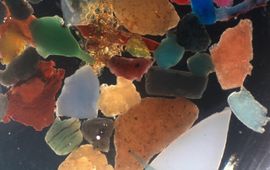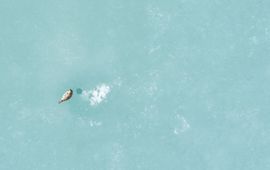Nature reports
Publisher: NIOZ Royal Netherlands Institute for Sea Research
Page 6 of 8 - 71 Results

Shoots of a young grass plant in the salt marsh grow clustered regardless of environmental factors. Whereas in the dunes, young grasses organize their shoots differently depending on the species and their habitat. New research..

What makes ecosystems resilient to climate change? A solid spatial structure. Researchers discovered a type of pattern forming in ecosystems that closely resembles the patchwork pattern that forms at very small scales in alloys..

The bacterium Rhodococcus ruber eats and actually digests plastic. This has been shown in laboratory experiments by PhD student Maaike Goudriaan at Royal Netherlands Institute for Sea Research (NIOZ). Based on a model study with..

Microbes have skins that react to the environment, a bit like our skin sweats when it is hot or shivers when it is cold outside. Fossilised microbial skins give us a glimpse of the climate in the geological past. By discovering..

The Wadden Sea is changing due to human influences such as mining for gas, tourism and sea level rise. Researcher Selin Ersoy, ecologist at the Royal Netherlands Institute for Sea Research (NIOZ) studied how ‘personalities’ of..

Researchers have constructed artificial reefs made of pear-trees in the subtidal Dutch Wadden Sea in a novel experiment as part of the project Wadden Mosaic. The first surveys now show that the reefs are teeming with life...

The Wadden Sea is an extremely productive ecosystem. The food web is supported by diatoms and other primary producers. By looking at nitrogen isotopes in the food chain, dr. Philip Riekenberg could determine the source of the..

The polar regions are some of the most inaccessible places of our planet. Figuring out where different seal species reside in this fast-changing environment is challenging. Researchers visited the waters around Svalbard, Norway,..

In the past century, many reefs in the Wadden Sea and North Sea have disappeared. Reefs are very important for fish because they can hide there. Therefore, we need to restore reefs, but how to do that? NIOZ is starting a study..

An international team of biologists has successfully used biologgers to reveal insights into the lifestyle and hunting behaviour of the little-known species Sowerby’s beaked whale. The team’s first results show that these dolphins..
